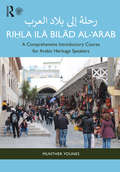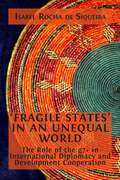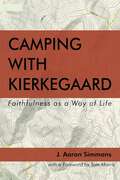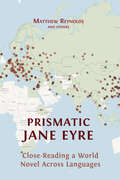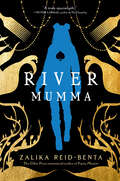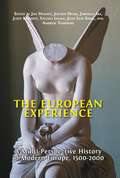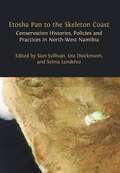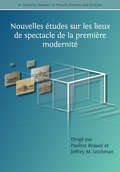- Table View
- List View
Riḥla ilā Bilād al-‘Arab رحلة إلى بلاد العرب: A Comprehensive Introductory Course for Arabic Heritage Speakers
by Munther YounesRiḥla ilā Bilād al-‘Arab starts with the Arabic alphabet and gradually and systematically builds the reading and writing skills and mastery of Fuṣḥā grammar. As students develop their reading, writing, and grammar skills, they will be learning about Arab history, society, and culture. This book contextualizes Arabic grammar teaching with sufficient and relevant drills and exercises. Added personal and cultural interest is given by the diary of Amal, an American student of Arab descent, who travels to Jordan and Palestine. This textbook includes maps, illustrations, and photographs and is accompanied by audio on the companion website that can be viewed here: www.routledge.com/cw/younes . The book is designed for Arabic heritage students—students who can understand and speak an Arabic dialect (Egyptian, Iraqi, Moroccan, etc.) but are unfamiliar with Modern Standard Arabic, known as Fuṣḥā.
‘Fragile States’ in an Unequal World
by Isabel Rocha de SiqueiraThis is a book about people. ‘Fragile States’ in an Unequal World: The Role of the g7+ in International Diplomacy and Development Cooperation introduces the members of the g7+, a group formed by 20 conflict-affected states: why they came to believe in politics and policy; how they feel about their work, their family and their communities; and what they want to leave behind for the next generations It is the story of their personal and collective values, their mistakes, and the challenges they faced, and it will resonate with anyone who has tried to organize and work with a group of very different people.
A Relational Realist Vision for Education Policy and Practice
by Basem AdiThis volume argues that relational realism can help us to make better educational policy that is more effective in practice. Basem Adi draws on critical realism to thoroughly re-examine fundamental assumptions about how government policymaking works, developing an ontological basis from which to examine existing government approaches and imagine an alternative approach based on a relational realist-informed critical pedagogy.
A Scientific Bibliography of the Far Northern Drakensberg
by Rodney MoffettThis Scientific Bibliography of the “Far Northern Drakensberg” is a continuation by the Afromontane Research Unit of the University of the Free State (ARU) to document published and other similar works on the mountains of the summer rainfall area of South Africa. It follows “A Scientific Bibliography of the Drakensberg, Maloti and Adjacent Lowlands” which was published in 2020 (Moffett 2020), and which covered the area between the North-Eastern Cape and the North-Eastern Free State. The current work extends this northward by including articles and publications dating back to 1875 (E.Cohen, on the Lydenburg goldfields) reaching as far as the Wolkberg and Woodbush near Tzaneen in Limpopo Province. Figure 1 shows the boundary of the area covered, and although referred to as the Far Northern Drakensberg in this work, it is identical to that described as the LMEE, Limpopo, Mpumalanga & Eswatini Escarpment by Clarke et al (2022). Although slightly separate from the “lower” escarpment, the mountainous Barberton and adjacent Eswatini area, as well as the Leolo Mountains in eastern Sekhukhuneland are also included. Details on how the boundary in figure 1 was determined are given in Clark et al (2022). Bibliographies on two further ranges in the summer rainfall area, viz. the Magaliesberg in Gauteng province and the Soutpansberg in Limpopo province are to be the subject of future compilations.
Being Gay is Not all Fabulous
by Katlego Vincent Scheepers"This book is born out of a need to speak back to a powerful, pervasive narrative about the lives of black gay men. The narratives still circulating pay no attention to the role of agency, creativity, hope, aspirations, and everyday lives of gay men. They are always gruesomely spectacularised for various gazes that satisfy news cycles. This is a non-fiction monograph telling of the community who don’t fit-in, that is rooted in both privilege and pain. The reader can expect intensive healing to the LGBTIQ+ community and allies. This book will allow the reader to witness resilience. The chapters in the book presents the contributors powerful yet vulnerable – a revelation of men who hurt, experience trauma, and stand in their vulnerability. What this book aims to achieve is to help firstly, gay men and young boys to find peace and know that somebody out there relates to their story and that giving up in not an option. Secondly, parents, aunties and uncles; please learn from these experiences. We need your support. We don’t need you to judge us especially when the society frowns at our identity or makes us feel like we are the outcast. To the society, the time is now – we need to start work on rebuilding, reconciling and teaching love. "
Camping with Kierkegaard: Faithfulness as a Way of Life
by J. Aaron SimmonsIn this book, Aaron Simmons takes us on a trip to the mountains to reflect on the meaning of life. In a world too often defined by a quest for “success” that leaves us empty, alone, and anxious, Simmons seeks “faithfulness“ outdoors with thinkers and artists from Aristotle to Kierkegaard, Sartre to Anne Lamott, and Kendrick Lamar to Donovan Woods. Simmons invites us to rethink what it means to make choices, take risks, be alone and silent while cultivating friendships, and to find our calling by facing our vulnerability. In the end, Simmons shows that faithfulness is more than a religious concept. It is about living a life of risk with direction.
Landmark Constitutional Cases that Changed South Africa
by Roxan Laubscher Marius Van StadenOn 14 February 1995, the Constitutional Court of South Africa was inaugurated by President Nelson Mandela. In his inaugural speech, President Mandela remarked that the “future of our democracy” hinged on the existence and the work of the newly created Constitutional Court. Furthermore, President Mandela rightly asserted that it is the Constitutional Court’s task “to ensure that the values of freedom and equality which underlie our interim constitution – and which will surely be embodied in our final constitution – are nurtured and protected so that they may endure”. These sentiments are as true now as they were almost thirty years ago. However, whether and how the courts have nurtured and protected these sentiments over the last twenty-eight years is the topic that we want to address. This book serves as the first volume in a series of books that considers selected landmark judgments of the South African Constitutional Court.
Linguistics for Legal Interpretation
by Terrence R Carney"Linguistics for Legal Interpretation is a language resource for scholars and practitioners of law who engage and work with statutory interpretation. It draws on lexical semantics, pragmatics and sociolinguistics to both understand and solve language challenges central to the interpretation effort. In addition, this book offers best practice guidelines for dictionary use as well as an introduction to corpus linguistic methods to assist legal interpreters in determining either ordinary or technical meaning. The book illustrates the various language tools and devices by applying them to case law and legislation, and it does so in an accessible style of writing. Terrence R Carney is Associate Professor of Afrikaans Linguistics at the University of South Africa. He specialises in the language of law. "
Male Powerlessness: Men and Intimate Partner Violence
by Emmanuel RowlandsMost discussions on intimate partner violence (IPV) tend to treat it as a unidirectional issue, one of male dominance over female companions and the manifestation of power and control. However, there are situations where the power of men is ineffective, as shown in the example of Simba above. Thus, the idea that we can understand and define males in terms of some discernible component is problematic - because it implies that the conflation of manhood and power is timeless and universal.
Prismatic Jane Eyre: Close-Reading a World Novel Across Languages
by Matthew Reynolds OthersJane Eyre, written by Charlotte Brontë and first published in 1847, has been translated more than five hundred times into over sixty languages. Prismatic Jane Eyre argues that we should see these many re-writings, not as simple replications of the novel, but as a release of its multiple interpretative possibilities: in other words, as a prism. Prismatic Jane Eyre develops the theoretical ramifications of this idea, and reads Brontë’s novel in the light of them: together, the English text and the many translations form one vast entity, a multilingual world-work, spanning many times and places, from Cuba in 1850 to 21st-century China; from Calcutta to Bologna, Argentina to Iran. Co-written by many scholars, Prismatic Jane Eyre traces the receptions of the novel across cultures, showing why, when and where it has been translated (and no less significantly, not translated – as in Swahili), and exploring its global publishing history with digital maps and carousels of cover images. Above all, the co-authors read the translations and the English text closely, and together, showing in detail how the novel’s feminist power, its political complexities and its romantic appeal play out differently in different contexts and in the varied styles and idioms of individual translators. Tracking key words such as ‘passion’ and ‘plain’ across many languages via interactive visualisations and comparative analysis, Prismatic Jane Eyre opens a wholly new perspective on Brontë’s novel, and provides a model for the collaborative close-reading of world literature. Prismatic Jane Eyre is a major intervention in translation and reception studies and world and comparative literature. It will also interest scholars of English literature, and readers of the Brontës.
Research Mentorship: A Developmental and Transformational Tool in Shaping and Sustaining African Women’s Career Progression in Academia
by Refilwe Nancy Phaswana-MafuyaThis book epitomizes the understanding that to excel, you have to believe in yourself and your ability to achieve, and that part of this process is enabled by mentorship. Looking at the history of women in science or academia, it is apparent that women have struggled long and hard to be recognised as legitimate scientists or academics and that women of colour are confronted with double jeopardy of both race and gender, not only in South Africa but at a global level. Gender equity in science or academia and racial diversity are moral and necessary imperatives. In academia, women are strongly represented in the early phases of their academic careers, yet there is an attrition in the number of women who are associate professors and full professors. This “leaky pipeline” not only wastes women's education and potential, preventing much-needed diversity in academia but, more profoundly, restricts women's goals and rights.
Rhoda ‘Comrade Kadalie, You Are Out of Order!’ A biography
by Joel PollakThis authorized biography was made possible through the gracious help of my mother-in-law, Rhoda Kadalie, who provided generous access to her files, letters, photographs, and extensive library of documents. She made time to sit with me for several hours of interviews from September through October 2021, to answer questions as they arose, and to offer innumerable clarifications. Rhoda also reviewed the first draft of the biography in December 2021, making corrections and additions, and contributing some of her own original vignettes, never before published.
River Mumma
by Zalika Reid-BentaIssa Rae’s Insecure with a magical realist spin: River Mumma is an exhilarating contemporary fantasy novel about a young Black woman who navigates her quarter-life-crisis while embarking on a mythical quest through the streets of Toronto. Alicia has been out of grad school for months. She has no career prospects and lives with her mom, who won’t stop texting her macabre news stories and reminders to pick up items from the grocery store. Then, one evening, the Jamaican water deity, River Mumma, appears to Alicia, telling her that she has twenty-four hours to scour the city for her missing comb. Alicia doesn’t understand why River Mumma would choose her. She can’t remember all the legends her relatives told her, unlike her retail co-worker Heaven, who can reel off Jamaican folklore by heart. She doesn’t know if her childhood visions have returned, or why she feels a strange connection to her other co-worker Mars. But when the trio are chased down by malevolent spirits called duppies, they realize their tenuous bonds to each other may be their only lifelines. With the clock ticking, Alicia’s quest through the city broadens into a journey through time—to find herself and what the river carries. Energetic and invigorating, River Mumma is a vibrant exploration of diasporic community and ancestral ties, and a homage to Jamaican folklore by one of the most invigorating voices in today’s literature.
The European Experience
by Jan Hansen;Jochen Hung;Jaroslav Ira;Judit Klement;Sylvain Lesage;Juan Luis Simal;Andrew TompkinsThe European Experience brings together the expertise of nearly a hundred historians from eight European universities to internationalise and diversify the study of modern European history, exploring a grand sweep of time from 1500 to 2000.
Toevallige ontmoetingen: Bio-ethiek voor een gehavende planeet
by Kristien HensIn dit rigoureuze en noodzakelijke boek brengt Kristien Hens bio-ethiek en filosofie van de biologie bij elkaar, met het argument dat het ethisch noodzakelijk is om in het wetenschappelijk onderzoek een plaatsje vrij te houden voor de filosofen. Hun rol is behalve ethisch ook conceptueel: zij kunnen de kwaliteit en de coherentie van het wetenschappelijk onderzoek verbeteren door erop toe te zien dat specifieke concepten op een consistente en doordachte manier worden gebruik binnen interdisciplinaire projecten. Hens argumenteert dat toeval en onzekerheid een centrale rol spelen in de bio-ethiek, maar dat die in een spanningsrelatie kunnen raken met de pogingen om bepaalde theorieën ingang te doen vinden als wetenschappelijke kennis: bij het beschrijven van organismen en praktijken creëren we op een bepaalde manier de wereld. Hens stelt dat dit noodzakelijk een ethische activiteit betreft.
William Moorcroft, Potter: Individuality by Design
by Jonathan MallinsonWilliam Moorcroft (1872-1945) was one of the most celebrated potters of the early twentieth century. His career extended from the Arts and Crafts movement of the late Victorian age to the Austerity aesthetics of the Second World War. Rejecting mass production and patronised by Royalty, Moorcroft’s work was a synthesis of studio and factory, art and industry. He considered it his vocation to create an everyday art, both functional and decorative, affordable by more than a privileged few: ‘If only the people in the world would concentrate upon making all things beautiful, and if all people concentrated on developing the arts of Peace, what a world it might be,’ he wrote in a letter to his daughter in 1930.
Divine Style: Walt Whitman and the King James Bible
by F. W. Dobbs-AllsoppIn exploring the seminal works of Walt Whitman, the great American poet, many commentators have acknowledged the underlying influence of The King James Bible. However, a study has yet to elucidate the precise manner in which the Bible has shaped Whitman’s poetic style. This is the deficit that F. W. Dobbs-Allsopp seeks to address in his new piece of literary scholarship: 'Divine Style: Walt Whitman and the King James Bible'. Dobbs-Allsopp, Professor of Old Testament at Princeton Theological Seminary, explicitly approaches Whitman from the perspective of a biblical scholar. Utilising his wealth of expertise in this field, he constructs a compelling, erudite and methodical argument for the King James Bible’s importance in the evolution of Whitman’s style – from his signature long lines to the prevalence of parallelism and tendency towards parataxis in his works. 'Divine Style' focuses on Whitman’s output in the years preceding the release of his 1855 opus 'Leaves of Grass' through the general period of the book’s first three editions. In this, Dobbs-Allsopp’s exploration of the period is exhaustive – covering not just Leaves of Grass but recently recovered notebooks, newly digitised manuscripts and additions to the corpus, such as the novel 'Life and Adventures of Jack Engle'. This is a work of careful, detailed scholarship, offering an authoritative commentary that will be a valuable resource for students of Whitman, biblical scholars and scholars of literature more generally.
Etosha Pan to the Skeleton Coast
by Sian Sullivan;Ute Dieckmann;Selma LendelvoEtosha Pan to the Skeleton Coast examines the conservation histories and concerns of one of southern Africa’s most iconic conservation regions: the variously connected ‘Etosha-Kunene’ areas of north-central and north-west Namibia. This cross-disciplinary volume brings together contributions from a Namibian and international group of scholars and conservation practitioners, working on topics ranging from colonial histories to water management, perceptions of ‘wildlife’ and the politics of belonging. Together, these essays confront a critical question: how can the conservation of biodiversity-rich landscapes be reconciled with historical injustices of social exclusion and marginalisation? The book is organised in five parts: the first provides a historical backdrop for the book’s detailed case studies, focusing on environmental and conservation policy and legislation; the second investigates post-Independence approaches to conservation; the third focuses on ‘Etosha-Kunene’ ecologies and related management issues; the fourth explores how historical circumstances shape present conservation and cultural landscapes; and the fifth addresses contemporary complexities of lion conservation and community-based natural resource management (CBNRM). By offering a comprehensive overview of evolving conservation boundaries, policies and practices in the region, this timely volume paves the way for the future design of conservation initiatives that more fully consider and integrate historical and cultural knowledge and diversity. Essential reading for conservation practitioners, policymakers, and academic researchers alike, this volume also serves as a valuable resource for university students interested in conservation studies and histories of conservation.
Genetic Inroads into the Art of James Joyce
by Hans Walter GablerThis book is a treasure trove comprising core writings from Hans Walter Gabler‘s seminal work on James Joyce, spanning fifty years from the analysis of composition he undertook towards a critical text of A Portrait of the Artist as a Young Man, through the Critical and Synoptic Edition of Ulysses, to Gabler‘s latest essays on (appropriately enough) Joyce’s sustained artistic innovation. Not only does this span of essays trace the evolution of Gabler’s thinking about Joyce’s originality and creative energy. It also reflects the development and maturation of Gabler‘s own genetic criticism and his methodology of genetic editing, which grows in depth and complexity across the collection. The reader will explore Joyce’s life and works through Gabler’s incisive eye, while also examining a progress of his reflections on his edition of Ulysses and the past controversy that beset it. This classic compendium combining well-seasoned scholarship and fresh criticism is an essential read for critics of Modernism, digital humanists, scholars and students of James Joyce, and anyone interested in the art of literary analysis.
Jesus and the Making of the Modern Mind, 1380–1520
by Luke ClosseyFor his fifteenth-century followers, Jesus was everywhere – from baptism to bloodcults to bowling. This sweeping and unconventional investigation looks at Jesus across one hundred forty years of social, cultural, and intellectual history. Mystics married him, Renaissance artists painted him in three dimensions, Muslim poets praised his life-giving breath, and Christopher (“Christ-bearing”) Columbus brought the symbol of his cross to the Americas. Beyond the European periphery, this global study follows Jesus across – and sometimes between – religious boundaries, from Greenland to Kongo to China. Amidst this diversity, Jesus and the Making of the Modern Mind, 1380-1520 offers readers sympathetic and immersive insight into the religious realities of its subjects. To this end, this book identifies two perspectives: one uncovers hidden meanings and unexpected connections, while the other restricts Jesus to the space and time of human history. Minds that believed in Jesus, and those that opposed him, made use of both perspectives to make sense of their worlds. This book includes over one hundred images, tables and audio clips.
Music and Spirituality: Theological Approaches, Empirical Methods, and Christian Worship
by George Corbett Sarah MoermanThe composer Sir James MacMillan has often referred to music as ‘the most spiritual of the arts’, and for many people, regardless of religious affiliation, this rings true. In listening to music, we are drawn to dimensions of human experience beyond the material. This collection brings together leading scholars from various disciplines – including Christian theology, musicology, and psychology and neuroscience – to interrogate the intimate relationship between music and spirituality. Organised in three parts – theological approaches, empirical methods, and Christian worship – the volume covers a vibrant array of topics. From examining how the Covid-19 pandemic has reshaped the profile of contemporary worship to investigating the spiritual effects of bodily positioning in liturgical spaces, from exploring spiritual experience through heart and breathing activity, electrodermal activity, and saliva samples to comparing the spiritual experiences of British Methodists with Welsh sporting fans, these essays attend to the lived reality of people’s perceived spiritual experiences through music. This collection will be an invaluable resource for scholars in the growing field of Christian theology and music, and will serve as a cornerstone for future research at the intersection of theology, music, and psychology and neuroscience. It will also appeal to anyone curious about why music consistently, across cultures, occupies a unique space bridging the material and spiritual dimensions of human life.
Nouvelles études sur les lieux de spectacle de la première modernité
by Pauline Beaucé;Jeffrey M. LeichmanLes théâtres du passé : des théâtres virtuels ? C’est une des questions passionnantes explorée dans ce livre par des chercheurs et chercheuses en littérature, musicologie, histoire, études théâtrales, histoire de l’art, architecture et sciences du numérique. Ces Nouvelles études sur les lieux de spectacle de la première modernité proposent de relever un défi épistémologique autour de la notion de virtuel pour la recherche en histoire du théâtre en engageant différents formats de réflexion : entretiens, articles multimédia, brèves de méthodologie, exposition virtuelle. L’objectif de ce volume est de situer le lieu de spectacle aussi largement que possible au carrefour des imaginaires et de ses usages pratiques. Ancrées dans le concret des archives, les contributions s’inscrivent dans la volonté d’un renouveau interprétatif en partant d’hypothèses rendues possibles par des perspectives contemporaines - nouvelles technologies, revalorisation d’objets autrefois jugés mineurs, intérêt pour les approches contrefactuelles. La diversité des objets de recherche, des méthodes et des résultats rassemblés éclaire non seulement l’histoire matérielle des spectacles de la première modernité, mais illustre aussi la nécessité de croiser les approches scientifiques pour renouveler la compréhension et la transmission des pratiques culturelles du passé.
